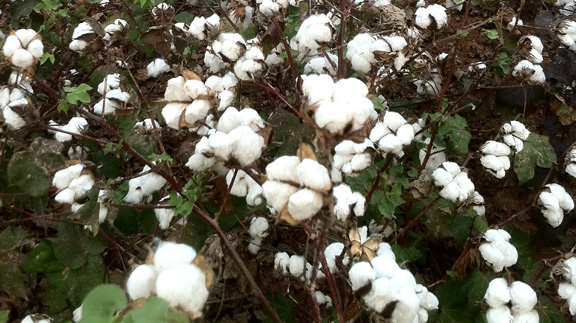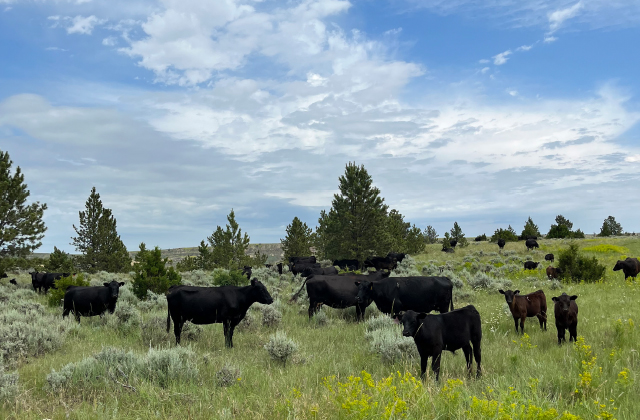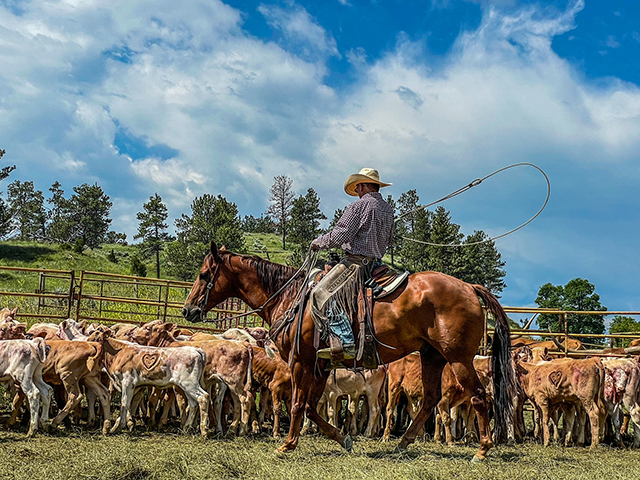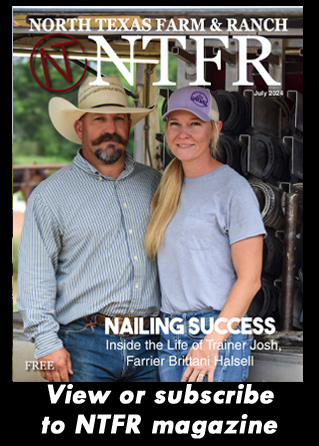Farm & Ranch
Texas A&M cotton study identifies fiber length, strength traits

By: Kay Ledbetter
Ongoing effort to utilize genotyping in cotton breeding advancements
Writer: Kay Ledbetter, 806-677-5608, [email protected]
Contact: Dr. Wayne Smith, 979-845-3450, [email protected]
COLLEGE STATION – Texas A&M University soil and crop sciences department and Texas A&M AgriLife Research are looking at using molecular tools as a solution to the world cotton market’s demand for longer, stronger fibers for spinning and weaving.
Dr. Wayne Smith, associate soil and crops sciences department head in College Station, and his graduate student Kari Hugie, said their ongoing project may not be seeing big dividends right now, but could be pavingthe way for the future.
Smith said upland cotton accounts for the majority of cotton fiber production worldwide. The global market places value on longer and stronger fibers, mandating U.S. breeders develop cultivars to meet this demand and remain competitive with man-made fibers.
One challenge breeders face concerning the improvement of fiber quality traits is low genetic diversity among elite, agronomically acceptable genotypes of upland cotton. The use of DNA marker-assisted selection could help breeders access unexploited genetic diversity as well as facilitate the simultaneous improvement of both yield and fiber quality traits, he said.
Recent quantitative trait loci, or QTL, mapping studies have led to the discovery of hundreds of QTL for fiber length and strength, and many of them show promise for use in marker-assisted selection, Smith said.
However, there are few reports of public programs utilizing marker-assisted selection for the improvement of fiber quality traits, he said. In general, there has been inconsistency among QTL discovered across studies and the QTL discovered generally are considered specific to the mapping populations in which they were discovered. Both are major obstacles preventing the use of marker-assisted selection for fiber quality.
Smith, along with Hugie, a Cotton Incorporated Fellow and doctoral student, began the project, “Identification of Robust Microsatellite Markers for Fiber Quality in Gossypium hirsutum,” to determine which of the publically available markers can be used in marker-assisted improvement of fiber quality in his program.
“The U.S. exports most of its cotton, because companies find it more economical to export our fiber, process it in other countries, and then import the finished textiles back into the U.S.,” Hugie said. “Thus, the U.S. now competes with raw cotton production globally, and improved fiber length will help our producers compete in this global marketplace.”
Hugie said in her research, she was looking for segments of DNA on cotton chromosomes related to fiber length and strength.
“We were looking for landmarks, or DNA markers, on chromosomes that we could use to identify these traits,” she said. “Instead of harvesting the cotton and sending fibers to a lab for fiber quality analysis to get information on length and strength, maybe we could just obtain the DNA and harvest only desirable plants without having to harvest the undesirable plants and thus save labor cost and improve breeding efficiency.
“What we found were DNA markers that are stably associated with fiber quality traits across diverse genetic backgrounds in the breeding program, but individually they really don’t increase length or strength tremendously,” Hugie said.
“But, research continues at Texas A&M with Dr. Hongbin Zhang and others to identify multiple QTL that together could provide selection techniques giving major improvements,” Smith said.
Zhang is professor of plant genomics and systems biology and director of the Laboratory for Plant Genomics and Molecular Genetics in College Station.
The study screened a total of 223 publically available DNA markers. Of that number, 55 markers were significantly associated with fiber length and 50 markers were significantly associated with fiber strength. Those numbers were narrowed down to subsets of three or four markers, which were then used in the selection of progeny rows across three different populations in the breeding program, Hugie said.
There was a significant difference in the mean fiber length and fiber strength between marker selected and non-selected progeny rows, she said. They also observed a differential response to marker-assisted selection across the three populations, which most likely is attributable to genetic background effects.
Still, Hugie said, the results demonstrate that the identified markers for fiber length and strength are reasonably stable across diverse genetic backgrounds.
“Our results suggest that the current, publicly available markers for fiber quality QTL are not yet a cost-effective alternative to field-based selection for the improvement of fiber quality considering the minor increase in trait means observed and the small amount of variation in length and strength accounted for by the markers,” Smith said.
“As genotyping costs continue to decrease relative to phenotyping costs, molecular breeding approaches that better capture phenotypic variation across different genetic backgrounds, such as mapping-as-you-go and genomic selection, may prove to be more efficient and cost effective methods for the improvement of fiber quality in cotton,” he said.
-30-
Farm & Ranch
Ag Elsewhere: Wyoming

By Tressa Lawrence
Ranchers across northeast Wyoming and the surrounding areas saw record moisture levels in 2023. The year 2024 has seen significantly less moisture to date.
Farm & Ranch
Ag Elsewhere: Montana

By Lindsey Monk
People are finishing up brandings. Here, Danny Walter is shown getting it done.
Farm & Ranch
Animal Disease Traceability

By Barry Whitworth, DVM
On July 6, 2020, the United States Department of Agriculture Animal and Plant Health Inspection Service (APHIS) posted in the Federal Register a proposal that radio frequency identification tags be used as official identification for cattle and bison. Following a period for public comment, the USDA APHIS released a statement on April 24, 2024, with the amended animal disease traceability (ADT) regulation for cattle and bison. The full press release may be found at https://www.aphis.usda.gov/news/agency-announcements/aphis-bolsters-animal-disease-traceability-united-states. Under the new rule, cattle and bison will need to be identified with tags that are both visual and electronic.
The USDA defines ADT as knowing where diseased and at-risk animals are, where they have been, and when the animal disease event took place. A system that allows for efficient traceability of livestock in the United States is essential for animal health and reducing the economic effect of a foreign animal disease outbreak and other diseases on livestock producers as well as others whose well-being depends on livestock production.
To read more, pick up a copy of the July issue of NTFR magazine. To subscribe by mail, call 940-872-5922.
-

 Country Lifestyles1 year ago
Country Lifestyles1 year agoScott & Stacey Schumacher: A Growth Mindset
-

 Country Lifestyles7 years ago
Country Lifestyles7 years agoStyle Your Profile – What your style cowboy hat says about you and new trends in 2017
-

 Equine10 months ago
Equine10 months agoThe Will to Win
-

 HOME7 years ago
HOME7 years agoGrazing North Texas – Wilman Lovegrass
-

 Country Lifestyles4 years ago
Country Lifestyles4 years agoAmber Crawford, Breakaway Roper
-

 Outdoor9 years ago
Outdoor9 years agoButtercup or Primrose?
-

 Country Lifestyles8 years ago
Country Lifestyles8 years agoDecember 2016 Profile, Rusty Riddle – The Riddle Way
-

 Country Lifestyles8 years ago
Country Lifestyles8 years agoJune 2016 Profile – The man behind the mic: Bob Tallman






